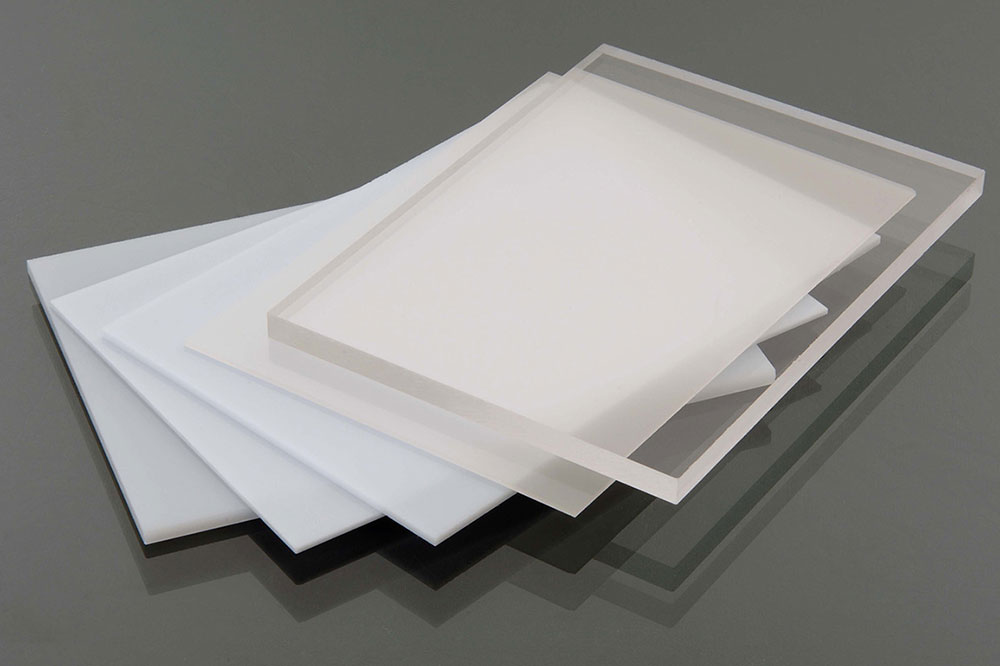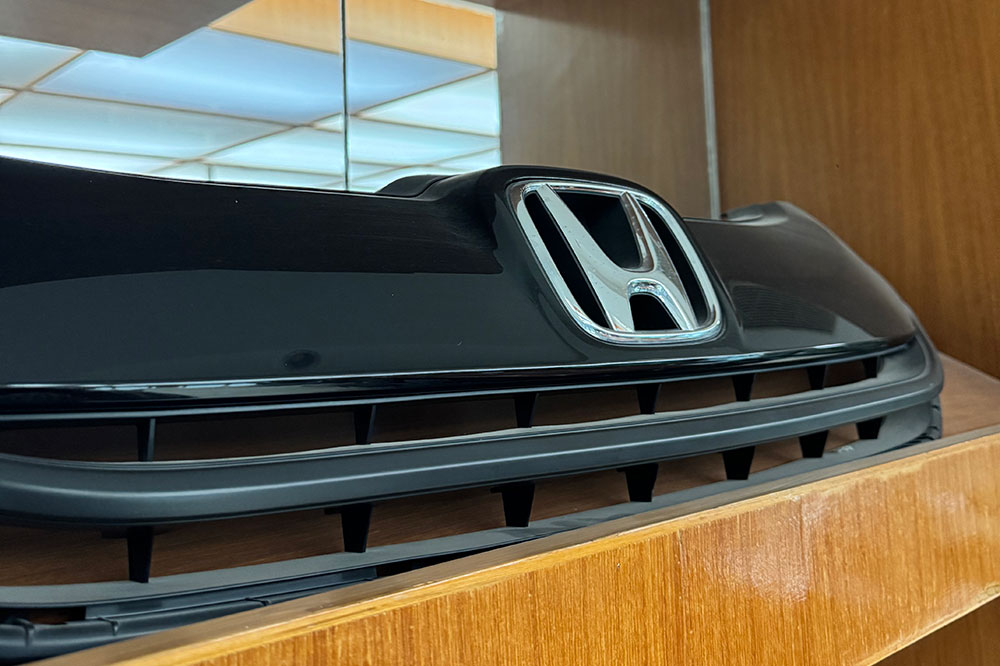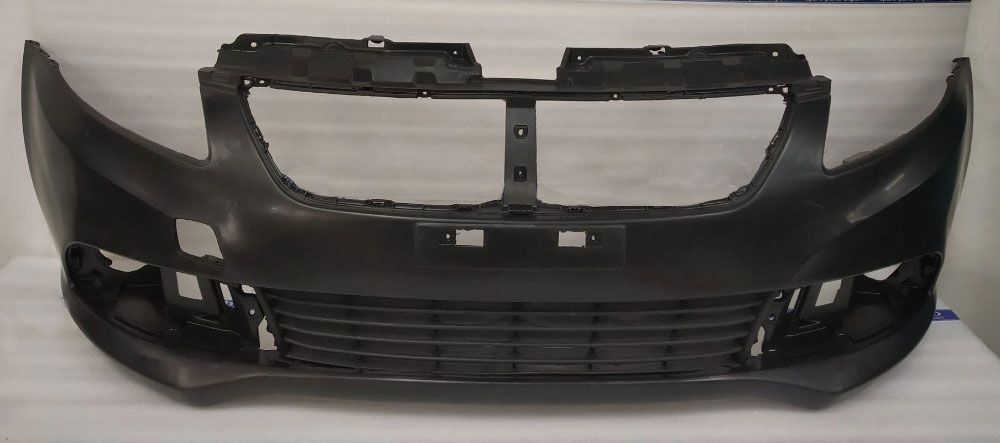Top 5 Car Bumper Plastic Material Choices for Injection Molding
Introduction:
In the automotive industry, car bumpers are essential components that provide safety and aesthetic appeal. The choice of car bumper plastic material significantly influences the bumper’s performance, weight, cost, and durability. Selecting the appropriate plastic used for car bumpers ensures optimal functionality and longevity. This article explores the top 5 plastic materials commonly employed in car bumper injection molding.
The History of Car Bumpers
The first time a bumper appeared in car design was on a Ford. According to multiple reports, the bumper first appeared in 1930. It was originally a simple U-shaped metal beam welded to the front under the hood. The Model A Deluxe Delivery Van produced between 1930 and 1931 was equipped with this structural element. The design of the crossbar of the bumper has only slightly changed throughout history.
For design and aerodynamic considerations, modern car bumpers are visually integrated with the body of the car. Bumpers have been a must-have equipment for vehicles since 1970. Car bumpers improve safety and comfort when transporting passengers or cargo. Car manufacturers added bumpers in the mid-1910s, but they were just a steel bar across the front and back.
In the 1920s, car designers made car bumpers more elaborate and sturdy, and they became more and more popular as optional parts. Over the next few decades, chrome car bumpers became heavier, more elaborate, and more decorative until the late 1950s, when American car manufacturers began to introduce new car bumper trends and brand-specific designs.
The 1960s saw the introduction of lighter chrome blade-shaped bumpers with a painted metal strip underneath. Multi-piece construction became the norm as automakers incorporated grilles, lights, and even rear exhaust systems into bumpers. GM used an “Endura” body-colored plastic front bumper on the 1968 Pontiac GTO, designed to absorb the impact of low-speed collisions without lasting deformation. In one television commercial, John DeLorean bashed the bumper with a sledgehammer but emerged unscathed.
The 1970-71 Plymouth Barracuda was equipped with front and rear flex bumpers. Renault fitted the Renault 5 with plastic bumpers in 1971. Modern bumpers are typically made of a plastic cover over a steel, aluminum, fiberglass composite, or plastic support bar.

Polypropylene (PP): Lightweight and Cost-Effective
Polypropylene for car bumper plastic material is widely favored due to its balance of affordability and performance. PP plastic bumper molding offers several advantages:
-
Lightweight: Reduces overall vehicle weight, enhancing fuel efficiency.
-
Cost-Effective: Economical material choice for mass production.
-
Good Impact Resistance: Absorbs minor impacts effectively.
-
Chemical Resistance: Withstands exposure to various chemicals.
However, PP has limitations, such as lower UV resistance, which can be mitigated by adding stabilizers. It’s commonly used in economy and commercial vehicles.
Key Properties:
| Property | Value |
|---|---|
| Density | 0.90–0.92 g/cm³ |
| Tensile Strength | 30–40 MPa |
| Impact Strength (Notched Izod) | ≥20 kJ/m² |
| Heat Deflection Temp | 80–100 °C |
ABS: Rigid, Paintable, and Stylish
ABS bumper plastic is known for its rigidity and excellent surface finish. ABS injection molding for bumpers provides:
-
High Rigidity: Maintains structural integrity under stress.
-
Excellent Surface Finish: Allows for smooth, paintable surfaces.
-
Good Dimensional Stability: Retains shape over time.
While ABS offers aesthetic advantages, it is slightly more expensive and has lower impact resistance compared to PP. It’s often used in vehicles where appearance is a priority.
Key Properties:
| Property | Value |
|---|---|
| Density | 1.04–1.06 g/cm³ |
| Tensile Strength | 40–50 MPa |
| Notched Izod Impact | 5–10 kJ/m² |
| Heat Deflection Temp | 80–100 °C |
PC+ABS Blend: Ideal for Premium Bumper Designs
The PC+ABS bumper molding combines the toughness of polycarbonate with the processability of ABS. This blend is a plastic used for high-end bumpers due to:
-
Enhanced Impact Resistance: Suitable for demanding applications.
-
Improved Heat Resistance: Performs well under high temperatures.
-
Superior Aesthetics: Provides a high-quality finish.
Despite its higher cost, PC+ABS is ideal for luxury vehicles requiring both performance and appearance.
Key Properties:
| Property | Value |
|---|---|
| Density | 1.10–1.15 g/cm³ |
| Tensile Strength | 50–60 MPa |
| Impact Strength | 15–25 kJ/m² |
| Heat Deflection Temp | 110–130 °C |
Polycarbonate (PC): Ultimate Durability
Polycarbonate car bumper plastic material are chosen for their exceptional durability. PC bumper plastic offers:
-
High Impact Resistance: Withstands significant forces without cracking.
-
Transparency: Allows for unique design elements.
-
Heat Resistance: Maintains properties at elevated temperatures.
The drawbacks include higher cost and processing challenges, making PC suitable for specialized applications like sports cars and off-road vehicles.
Key Properties:
| Property | Value |
|---|---|
| Density | 1.20–1.22 g/cm³ |
| Tensile Strength | 60–70 MPa |
| Notched Izod Impact | >20 kJ/m² |
| Heat Deflection Temp | 140–150 °C |
TPO/TPU: Flexibility Meets Functionality
TPO bumper material and TPU for car bumper molding are thermoplastic elastomers known for their flexibility. They provide:
-
Flexibility: Absorbs impacts without permanent deformation.
-
Weather Resistance: Performs well in various environmental conditions.
-
Lightweight: Contributes to overall vehicle efficiency.
These materials are often used in SUVs and vehicles requiring flexible bumper components.
Key Properties:
| Property | TPO | TPU |
|---|---|---|
| Density | 0.90–1.05 g/cm³ | 1.10–1.25 g/cm³ |
| Tensile Strength | 20–30 MPa | 30–50 MPa |
| Elongation at Break | 100–500% | 200–600% |
| Service Temp Range | –40 to 100 °C | –30 to 80 °C |
How Plastic Material Impacts Bumper Mold Design
The selection of car bumper plastic material directly affects bumper mold design. Different materials require specific considerations:
-
Cooling Systems: Materials with varying thermal properties necessitate tailored cooling strategies.
-
Ejection Mechanisms: Flexibility and shrinkage rates influence ejector design.
-
Surface Finish Requirements: Material choice impacts the achievable surface quality.
Collaborating with mold manufacturers early in the design process ensures compatibility between material properties and mold design, leading to efficient production and high-quality parts.
Selecting the Right Plastic Material for Your Car Bumper Project
Choosing the appropriate car bumper plastic material involves balancing performance requirements, aesthetic goals, and cost constraints. Understanding the properties of each material enables informed decisions that align with specific project needs.
Why Choose Huazhi Technology for Your Bumper Mold Needs?
Huazhi Technology specializes in the design and manufacture of injection molds and die-casting molds for automotive applications. Our expertise includes:
-
Customized Solutions: Tailored mold designs to meet unique specifications.
-
Advanced Technology: Utilization of state-of-the-art equipment and processes.
-
Quality Assurance: Commitment to delivering high-precision, durable molds.
-
Expert Consultation: Professional guidance on material selection and design optimization.
-
Certified ISO 9001:2015 quality management and HACCP/GMA‑SAFE compliance.
Partnering with Huazhi Technology ensures reliable, efficient, and high-quality bumper mold production.

Conclusion
Selecting the right car bumper plastic material involves balancing performance, aesthetics, cost, and processability. From cost‑effective PP to ultra‑durable PC and flexible TPO/TPU, each material serves distinct applications. Partner with Huazhi to leverage our material expertise and precision molding capabilities.
🚀 Ready to optimize your bumper project? Contact us today for a free consultation and quotation!
FAQ
Q1: Which car bumper plastic material best balances cost and performance?
A: PP offers the most economical balance for high‑volume, low‑impact bumper applications.
Q2: Can I switch from PP to ABS without changing the mold?
A: Minor mold adjustments may be required for gate size and cooling layout due to different shrink rates.
Q3: What additives improve UV resistance?
A: Hindered amine light stabilizers (HALS) and UV absorbers are commonly compounded into PP and TPO.
Q4: Do flexible plastics compromise structural safety?
A: TPO/TPU are used for trims and overlays, not crash‑bearing sections—rigid core remains PP or ABS.
Q5: How do I get a material performance comparison?
A: Contact Huazhi for a bespoke material datasheet package comparing tensile, impact, and thermal properties.

